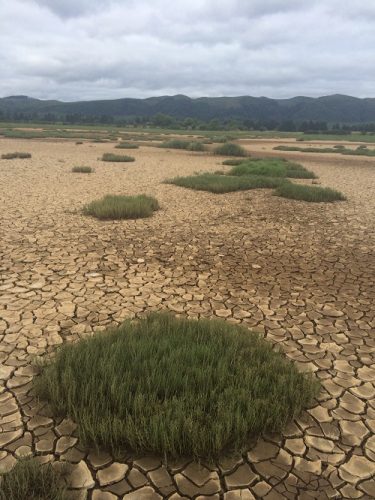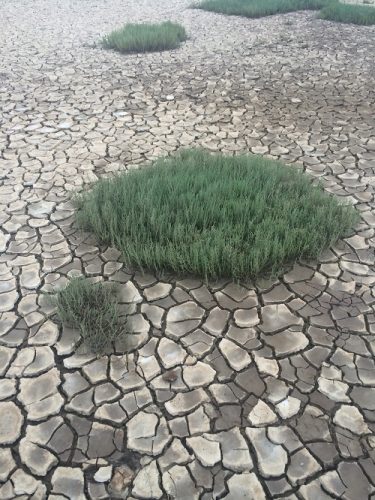Samphire, sea bean, saltwort, pickle weed, sea asparagus- these are just some of the names given to the lush, grass-like plant that grows along the coasts. Most people who encounter them don’t know what they are, never mind that they’re edible. For a plant that was once named after a saint, it’s surprising that the general population has no idea what samphire is today.
Samphire seems to have a mixed reputation. Before it mutated into what it is today, samphire was named after Saint Pierre, the patron saint of fisherman. This showed how much fisherman loved the plant, but it appears Shakespeare wasn’t too fond of it himself. In King Lear, he wrote, “Half-way down Hangs one that gathers samphire; dreadful trade!” (Act IV, Scene VI) He was probably referencing the browner and thinner variety of samphire, which generally grows on the sides of cliffs. Today, however, we normally utilize a variety of samphire that is both hardier and easier to harvest.
Folk remedies and literature have praised sea asparagus for helping to cure constipation, asthma, and even diabetes. While those claims have yet to be proven, sea beans have scientifically been shown to strengthen the immune system, reduce inflammation, and prevent hypertension and tumor growth. It also serves as a weight loss aid and anti-oxidant.
Perhaps the best way to explain samphire and its environment is to share my personal experience with it. During my summers in high school, I was almost always looking for ways to make money. As it happened, my mom was too, and she asked me to go with her to harvest sea beans along the Oregon Coast. We were down by the bay right next to the water and all I saw was grass and dead wood.
 I was confused until she identified the patches of samphire. She picked a piece off, showing me how they were more woody once the tips had started turning reddish-purple and began to sprout tiny yellow-to-orange flowers. Samphire is tastiest when its young and no taller than four inches, so it’s best to avoid any that appear that way, regardless of how pretty they are. Picking is easy- all you have to do is gently grab a full handful of sea beans like you would a handful of hair and use a knife to cut near the bottom of the stems where it fades into a brighter green.
I was confused until she identified the patches of samphire. She picked a piece off, showing me how they were more woody once the tips had started turning reddish-purple and began to sprout tiny yellow-to-orange flowers. Samphire is tastiest when its young and no taller than four inches, so it’s best to avoid any that appear that way, regardless of how pretty they are. Picking is easy- all you have to do is gently grab a full handful of sea beans like you would a handful of hair and use a knife to cut near the bottom of the stems where it fades into a brighter green.
Harvesting was never a clean job, however. Often times, the sea beans grew in areas that are covered with water during high tides. Because of this, the soil got really soft in some areas and I occasionally found myself knee-deep in mud. During last year’s harvest, my mom learned from another experienced picker that rinsing the sea beans in the bay’s salt water after picking them preserves their flavor and crispness for longer periods of time. Ever since then, I’ve gotten soaked in order to clean them off. So far, that’s only been a few times.
I’ve always returned to get samphire for a few reasons. Of course, I always made good money by selling them to Whole Earth Harvest. Secondly, there’s not an experience quite like picking sea beans during the summer. The salty air, damp soil, warm sun, and open, quiet marshes make for a peaceful day, even if it is labor-filled. Lastly, I pick samphire for its salty, slightly tangy flavor. I love to eat them fresh in salads, deep fry them in batter for a snack, or steam them for a minute or two, mix them with garlic butter, and scatter them over halibut for my extended family of fishermen.
Finding sea beans may take patience, and picking them may be messy. However, it’s a practice that I’ve found to be quite worthwhile. Whether you go out picking yourself or you simply buy samphire, you’ll love the sharp crunch and briny flavor they add to your meals.


